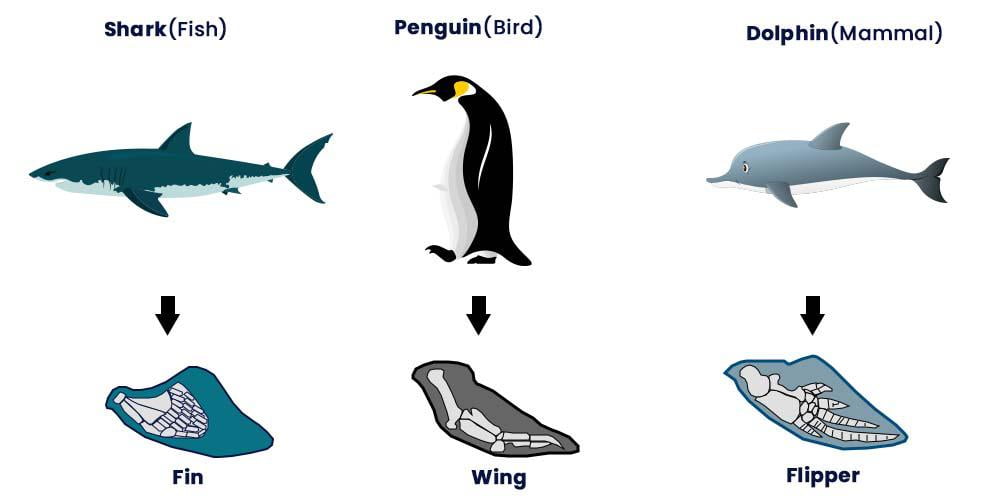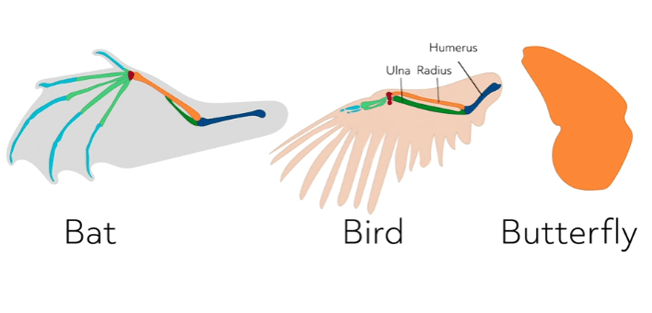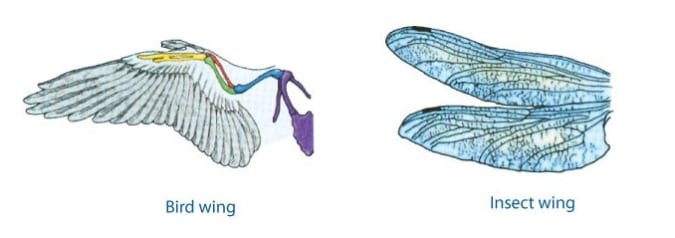What is Analogous Structures ?
As opposed to homologous structures, which originate from a common ancestral feature, analogue features are characteristics of distinct species that have developed in response to comparable environmental challenges and are similar in function but not always in structure.
Comparable biological structures are those seen in various species that serve comparable purposes and have independently evolved as a result of adaptation to comparable environmental stressors, as opposed to sharing a common ancestor. Although these structures have diverse evolutionary origins, they frequently have the same function or goal.

Table of Contents
Analogous Structure

Analogous Structure are biological traits that are comparable in function but have evolved independently in distinct species, frequently as a result of adaptation to similar environmental circumstances rather than common ancestry.
Examples of Analogous Structure
Wings of Birds and Insects

The ability to fly is possessed by both insects and birds thanks to their wings. Insect wings are membranous, but the wing structure of birds is made up of feathers and their skeleton. In these two groups, these structures independently evolved to fulfil the shared purpose of flight.
Flippers of Dolphins and Penguins
Swimmers who use their flippers to propel themselves forward include both dolphins and penguins. On the other hand, penguins are birds with flippers produced from their wings, while dolphins are mammals with modified forelimbs serving as flippers. The same function—efficient swimming in water—is served by both structures, despite their distinct evolutionary histories.
Camera Eyes of Vertebrates and Cephalopods
While cephalopods, like octopuses, have comparable camera-like eyes with a lens and retina, vertebrates, like humans, have eyes with a lens that focuses light onto a retina. Nonetheless, these two groups’ eye structures developed separately, showing convergence in their visual systems as a means of environment adaptation.
Thorns in Roses and Cacti
Thorns are a defence mechanism used by both cacti and roses against animals. Cacti, on the other hand, are succulent plants with thorns generated from modified leaves, and roses are flowering plants with modified stems. The similar role of thorns in protecting against predators is present in both plants, despite their distinct evolutionary histories.
Significance of Analogous Structure
There are various important reasons why similar structures are important in biology.
Convergent Evolution Evidence
Convergent evolution, in which distant species independently evolve comparable features or structures in response to similar environmental forces, is strongly supported by analogous structures.
Functional Adaptation
Functional Adaptation: Despite having distinct evolutionary origins, homologous structures frequently fulfil comparable roles in other animals. These structures’ functional similarities suggest that they are appropriate for particular uses in the contexts in which they are found.
Diversity of Life
The striking diversity of life on Earth is emphasized by similar architecture. Even if they come from quite diverse evolutionary lineages, organisms can adapt comparable strategies to deal with common problems like finding food, avoiding predators, or procreating.
Biomedical Applications
Comparable structures can shed light on human health and medicinal studies. Analogous structures in non-human creatures, for instance, can provide important comparative anatomy and physiology information that guides surgical methods and medical interventions. Furthermore, comprehending the functional parallels and discrepancies among similar structures might facilitate the creation of biomimetic technologies that draw inspiration from the natural world.
Evolutionary Patterns
Comparable structure analysis advances our knowledge of evolutionary processes and patterns. Through the analysis of the anatomical and molecular characteristics of similar structures in various species, biologists can reconstruct evolutionary links and deduce the evolutionary processes leading to the development of these structures. This information advances our comprehension of the tree of life and helps to improve evolutionary theories.
Frequently Asked Questions(FAQ)
Define Analogous Structure ?
Analogous Structure are biological traits that are comparable in function but have evolved independently in distinct species, frequently as a result of adaptation to similar environmental circumstances rather than common ancestry.
Write the example of Analogous Structure?
The example are
1.wings of bird and insects
2.Flippers of Dolphins and Penguins
3.Camera Eyes of Vertebrates and Cephalopods
Give short information about diversity of life?
The striking diversity of life on Earth is emphasized by similar architecture. Even if they come from quite diverse evolutionary lineages, organisms can adapt comparable strategies to deal with common problems like finding food, avoiding predators, or procreating.
Related Articles

